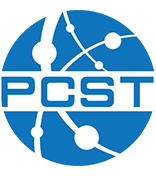Youth in museum-led Citizen Science – participation in scientific research, science education or public engagement?
Author: Julia Lorke – The Natural History Museum, London, United Kingdom
Co-authors:
- Heidi L. Ballard – University of California, Davis, United States
- Maryam Ghadiri Khanaposhtani – University of California, Davis, United States
The concept of citizen and community science (CCS) has been attributed with the potential to democratise science, enabling everyone to take part in scientific research – embodying the participatory turn in the relationship of science and society. To examine the reality of CCS, we investigate youth participation in BioBlitzes led by three Natural History Museums. BioBlitzes are contributory CCS events which organise volunteers to record all species of organisms in a bounded space. How do young people actually participate (Lave, 1991) in BioBlitzes; do they contribute data to scientific research or is their participation more similar to science education or public engagement programmes?
We observed 96 young people in 16 BioBlitzes. The iterative analysis of our ethnographic fieldnotes revealed that in 83% of the observations, youth engaged in scientific practices (NRC Framework, 2012) with respect to the CCS activities. We saw some young people participate in all the necessary steps to generate a biological record. However, participation in exploration (49%) and observing (51%) was more common than in identifying organisms (28%) and documenting findings (15%). Participation in recording was especially rare (10%). This low frequency of recording is alarming as this is the crucial step in data collection for CCS. If the data is not recorded, it cannot be used for scientific research or monitoring; therefore, we argue that recording distinguishes authentic CCS participation from other types of science education and public engagement. Participation in these may be very impactful, but in the case of young people in BioBlitzes, CCS is not living up to the claim of enabling everyone to take part in scientific research.
To address this issue, we have embarked on a design-based research process allowing us to develop and test design features aiming to increase young people’s recording at BioBlitzes, and thereby their participation in authentic scientific research.
The author has not yet submitted a copy of the full paper.
Presentation type: Individual paper
Theme: Transformation
